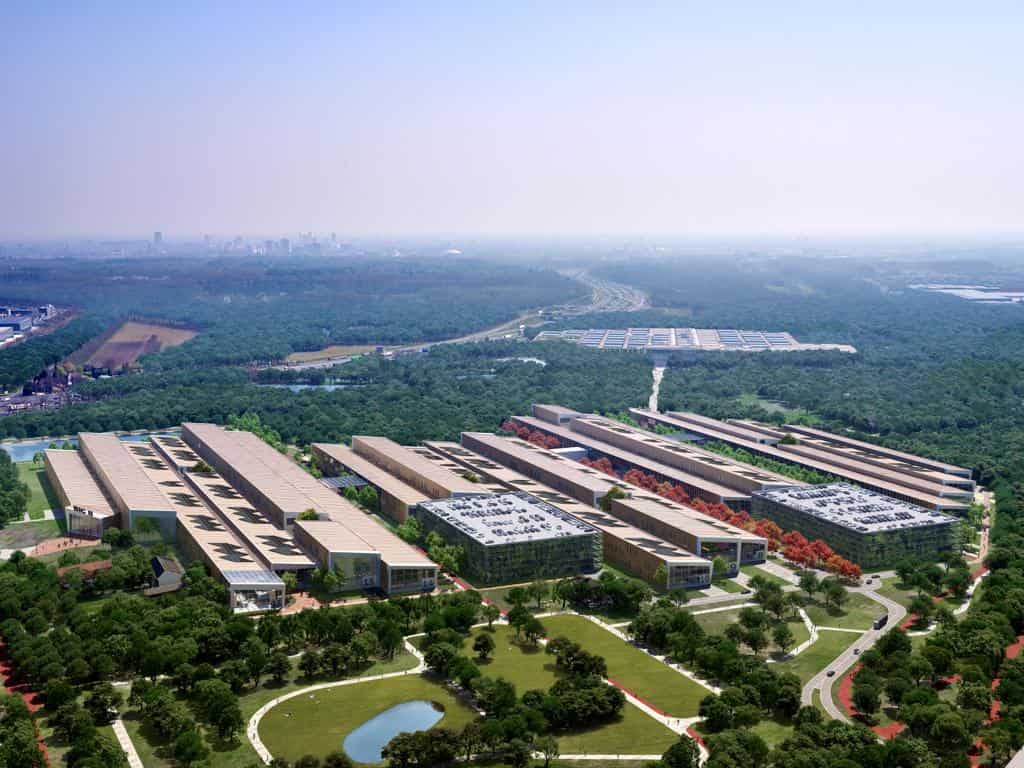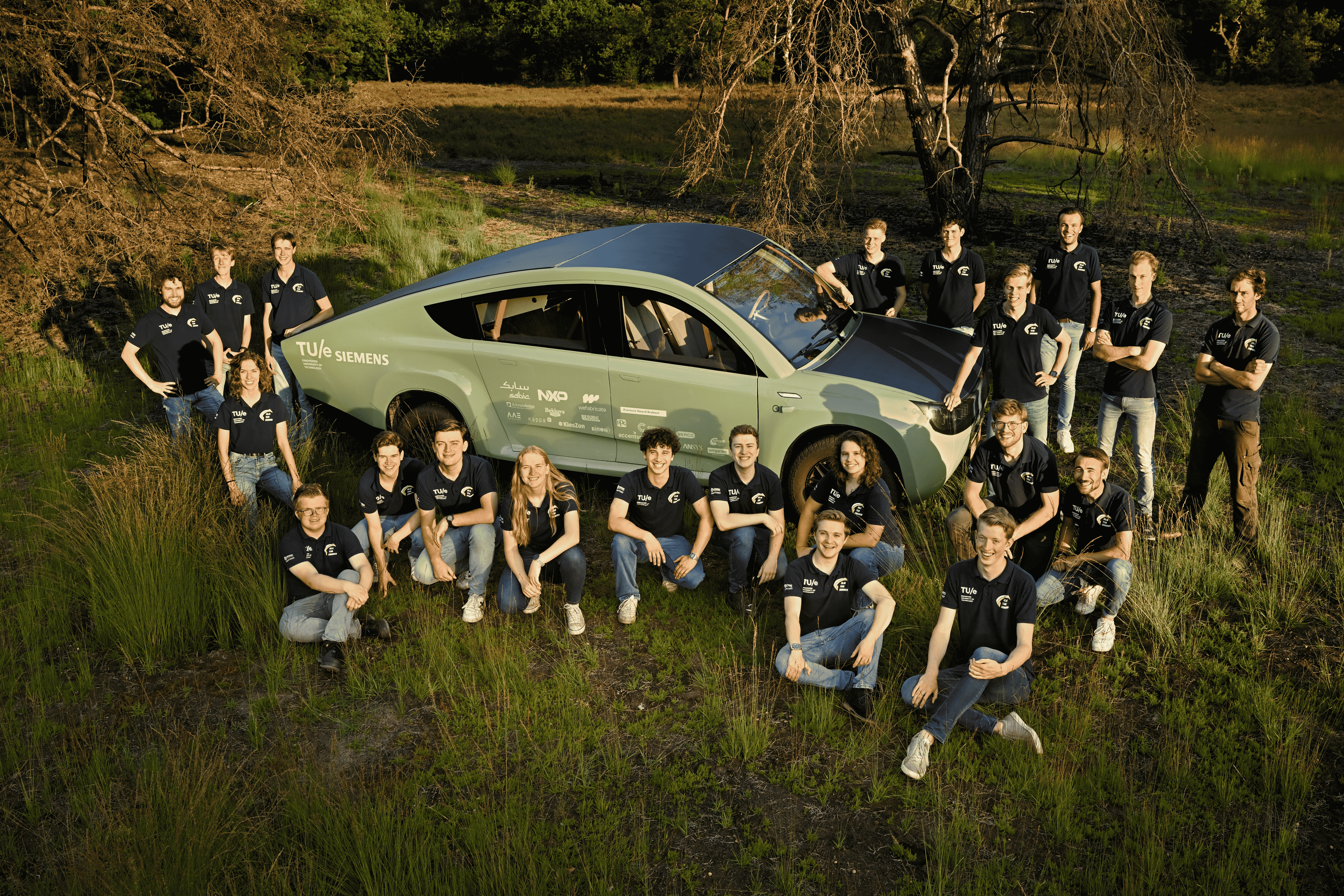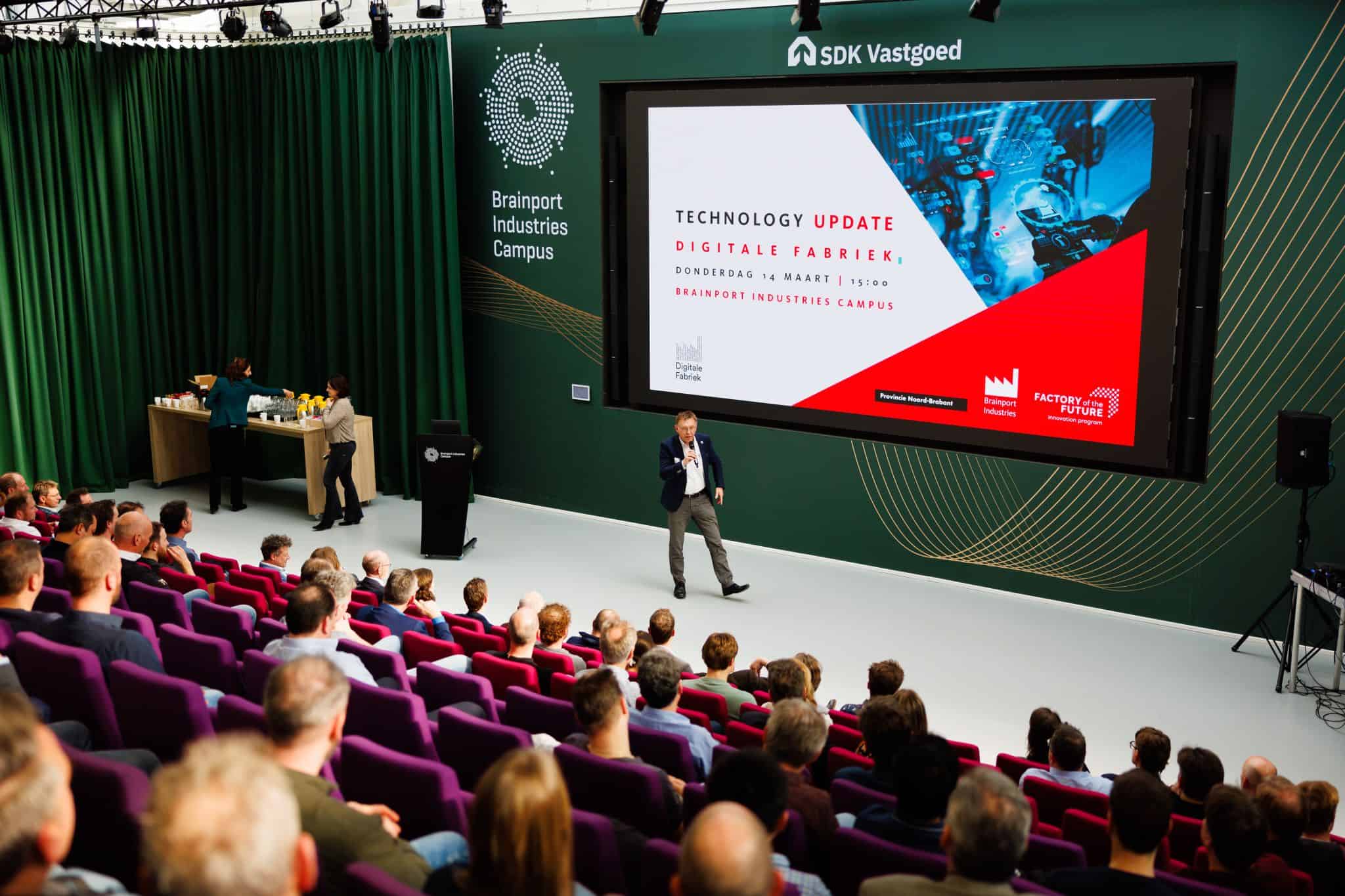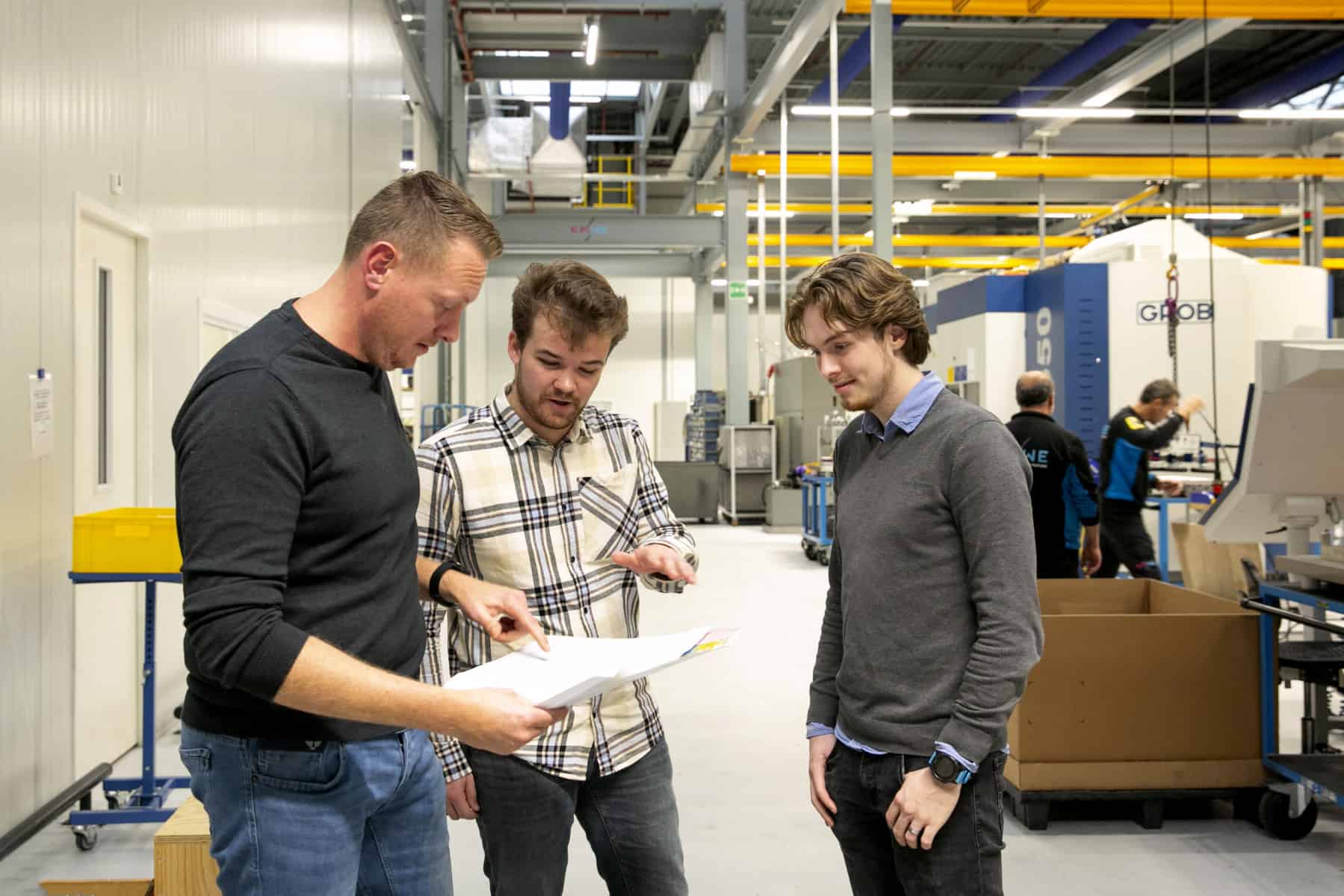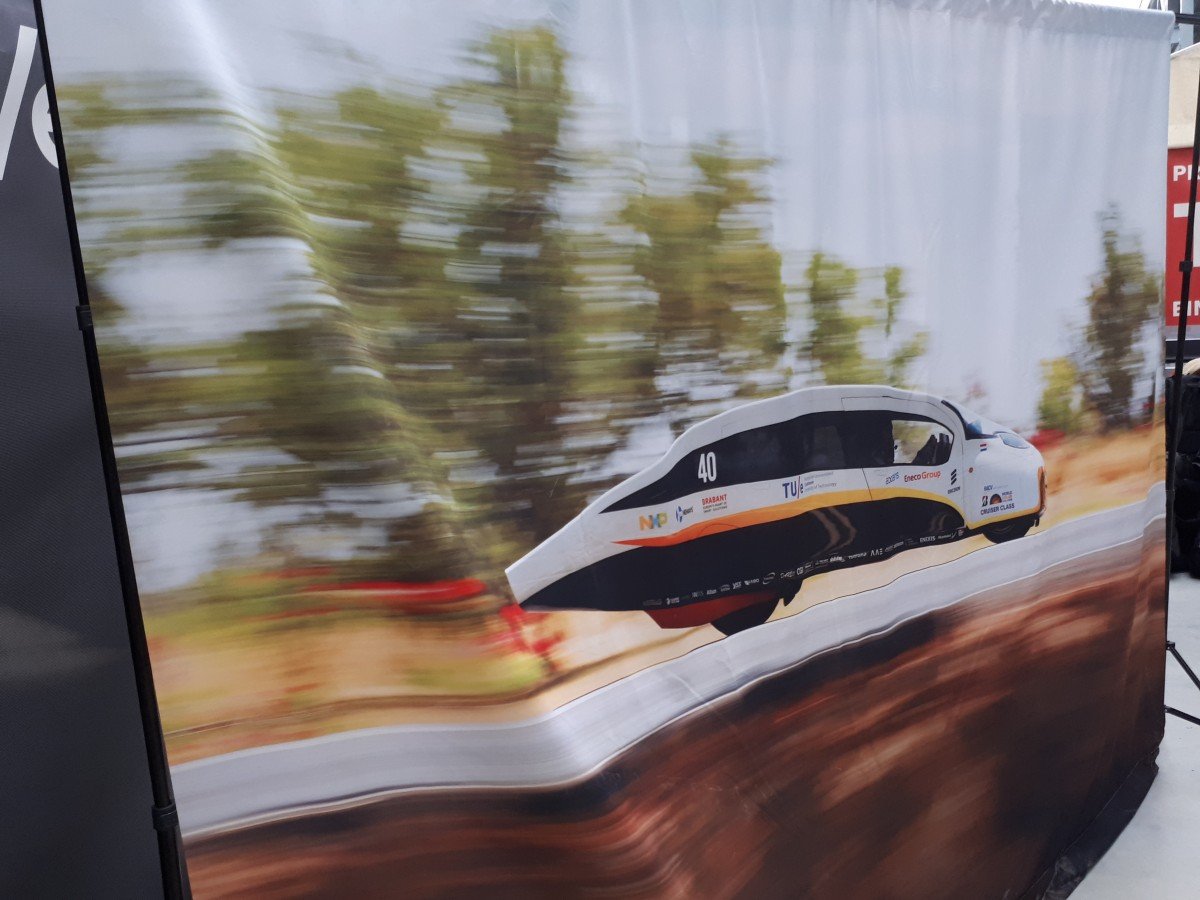
Solar Team Eindhoven has kicked off the production process for the fourth edition in its series of solar-powered family vehicles. A notable change since the project started seven years ago is that the entire creation process will take place in Eindhoven: most of the design is based at the Eindhoven University of Technology (TU/e) and the manufacturing will be on the Brainport Industries Campus (BIC). The current team, consisting of 26 students from the TU/e working full-time on the project, will compete in the Bridgestone World Solar Challenge in Australia, on 13-20 October 2019.
“This time everything is coming together here in the Brainport region, with all of our partners. And, here at the BIC, we are working to develop as many partnerships as possible, to ensure that we make this ecosystem work”, says Evan Quadvlieg, Technical Acquisition Manager at Solar Team Eindhoven.
He spoke to Innovation Origins at the official launch of the production process at the BIC, where Carlo van de Weijer, Director of the Strategic Area Smart Mobility at the TU/e, and Ton Backx, Dean of the Department of Electrical Engineering at the TU/e, lay the first layer of carbon to the audience of project partners. The ceremony marks the beginning of a three-and-a-half-month period during which the team will work around the clock in the cavernous and buzzing BIC location to get the vehicle ready for launch.
Martijn Ruijzendaal, Aerodynamics Engineer & Strategist for Solar Team Eindhoven, says it is a tight timeline, which leaves no room for error. The time pressure is heightened this year by the fact that there have been significant changes to the regulations for the Cruiser Class in the World Solar Challenge, which requires the team to incorporate a fair amount of redesign.

(Read: Solar Team Eindhoven keeps a high sense of competition during gap year)
An oven of your own
A critical element in getting the team to work entirely from Eindhoven is access to an oven large enough to bake the carbon fibre panels from which the vehicle is assembled. “The car is about five metres long; the component panels have to fit inside an oven that can reach a temperature of 120 degrees for an extended period of time”, Quadvlieg says.
“Usually we would find partners [for the process of baking the panels] somewhere in the Netherlands and would produce on location. But that means dividing the team for extended periods of time between that location and Eindhoven. So, this year we bought a shipping container and fitted it with a heating element and an industrial-sized fan.”
He emphasises the importance of keeping production local. “The fact that we can produce here at BIC really gives us an edge. We can still work together as a team, without the long communication lines.”
“The climate agreement sets ambitious goals for 2030, but without changing the current system drastically we will not make it.”
Ready for launch
Looking ahead to the July deadline for the unveiling, and the race in Australia, Quadvlieg says a big challenge is that the vehicle will have to drive 1,200kms on just one charge. “So, the battery has to get a lot bigger. But, we still have to fit all the parts and four people and combine all of that in one aerodynamic package. That is quite a challenge.”

(Read: Solar Team Eindhoven more than a world champion)
The majority of the team will leave for Australia on 22 August and will start the journey in Adelaide, driving the route to Darwin. The car will be prepared and will undergo a final test. “From there, on 13 October, we will start, in challenge mode”, he says will a confident smile.
Asked how optimistic he is about the race, which Solar Team Eindhoven won in 2017, 2015 and 2013 as well, he says: “The rules of the challenge have changed dramatically, but we are optimistic that we will put up one hell of a show.”
Stepping towards the sun
Mick van der Spoel, Project Manager for Solar Team Eindhoven, says the new car – which is not yet named – represents a big leap towards a future in which our lives and our cars are powered by the sun. “We need to have placed 1.8 million charging stations in the Netherlands by 2030 to meet the energy demand of the number of electric vehicles we want to have by then. The climate agreement sets ambitious goals for 2030, but without changing the current system drastically we will not make it.”



